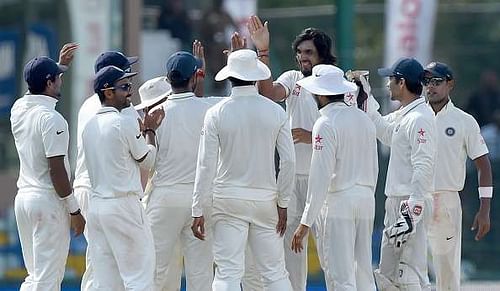
Stats: Number of times India have won a series after losing the first Test
The Indian cricket team are trailing 1-0 in their four-match Border-Gavaskar Test series against Australia. Heading into the second Test at Bengaluru, they seriously need to pick up their games and put in a much better performance if they hope to level the series 1-1.
Not many teams in the last decade have come to India and have taken a 1-0 lead. South Africa, in fact, were the last side to do that, back in 2010, when they beat India in the first match of the 2010 Test series and India then won the next Test at Kolkata to level the series 1-1.
In their 84-year Test history, India have managed to come back and win a series after losing the first Test, on three occasions.
The first of those instances happened in 1972 in a home Test series against England. The visitors toppled India in the opening Test at Delhi, with Geoff Arnold doing the damage with the ball in both the innings. Then the batsmen stepped up to the task on a wicket assisting the spinners, to pull off a six-wicket win in a low scoring game.
But in the second Test at Kolkata, India fought back to win by 28 runs in yet another low-scoring contest. A superb all-round performance by Tony Grieg was negated by Bishen Singh Bedi’s eight-wicket haul.
Then in the third Test at Chennai, it was yet again the spinners who did the bulk of the damage as the likes of Bedi and BS Chandrashekhar were once again in their element. Despite a late stutter from the Indians, they won the game by four wickets to make it 2-1 in their favour.
The final two Tests in Kanpur and Mumbai ended in draws and that meant India had completed the first come-from-behind Test series win in their history.
The second such instance came in 2001, again at home, this time against Australia. Steve Waugh’s Australian side were on a 15-match unbeaten streak and had come to India to conquer what their captain called the ‘Final Frontier’.
Extra Cover: Harbhajan Singh congratulates Australia after his series prediction goes wrong
That objective looked to be on its way to completion when the Australians defeated the hosts comprehensively in the first Test in Mumbai and then had India on the ropes in the second Test at Kolkata. But VVS Laxman and Rahul Dravid decided to raise their game at the very last minute, and the rest is history.
Joining hands at 232 for 4, they put on a mammoth stand of 376 runs, that included batting out an entire day. Then, led by Harbhajan Singh, the Indians dismissed the Australians for 212 on the final day to win the Test by 171 runs and level the series 1-1.
In the third Test at Chennai, courtesy Matthew Hayden’s 203, Australia posted a competitive 391 in the first innings. But India produced yet another excellent batting performance to post 501 on the back of a century from Sachin Tendulkar.
Harbhajan once again did the damage in the second innings, picking up figures of 8 for 84 to leave India with 155 runs to chase for the win. The Australians made the Indians work for every run and eventually it was the off-spinner who got the team home, skirting a ball away to point to complete a sensational turnaround and win the series 2-1.
Fast-forward to 14 years later and India, under Virat Kohli, are in Sri Lanka for a three-match Test series. They seemed in pole position to go 1-0 up in the series in the first Test at Galle, before Dinesh Chandimal played one of the best counter-attacking innings in recent times to bring the hosts back into the game. Then, chasing 176 runs on a pitch spinning big, India folded to the turn of Rangana Herath, who took figures of 7 for 48 in 21 overs to seal the win for his side.
In the second Test, led by a hundred from KL Rahul, India put up a competitive score of 393 runs. The bowlers held up their end of the bargain to bowl the hosts out for 306 and take a lead of 87 runs.
Then Ajinkya Rahane, batting at Number 3, stepped up his game to make a crafty century. The Indian bowlers put up a sterling performance in the final innings to help their side win by 278 runs and level the series 1-1.
In the third Test, led by a steely knock of 145 mot out from Cheteshwar Pujara, India posted a competitive total of 312 runs on the board. Ishant Sharma then turned it on with the ball in hand, picking up a five-wicket haul to help dismiss the hosts for 201.
After suffering a poor start in the second innings, India recovered very well thanks to some fine lower-order contributions to post 274 runs and give the Lankans a target of 386 runs to win the series.
Despite a fine hundred by Angelo Matthews, the Indian bowlers stuck to their task admirably, keeping things tight to make it tough for the batsmen. India eventually won the game by 117 runs to win the match and the series 2-1. It was their first series win in the Emerald island after a gap of 22 years.
Bowlers leading the way
In each of the above three series, we can see a common trend – it was the bowlers who rose to the task and delivered every single time. While we've always stressed on the need for the batsmen to put the runs on the board, the above examples provide a good insight on how it is equally important to pick up 20 wickets in order to win Test matches on a regular basis.
A similar bowling effort will be needed from the hosts in Bengaluru, if they are to level the four-match series.
